Welcoming the brightest moon of the year: The annual Jeongwol Daeboreum celebration is full of tradition
A large daljip, or “moon house” in Korean, is set up every year at the Namsangol Hanok Village’s parking lot in central Seoul. [YONHAP]
On March 2, the brightest full moon of the year will be shining as it is Jeongwol Daeboreum, or the first full moon of the year. The annual event falls on the 15th day of the first month of the lunar calendar and is believed to be when the moon is its most radiant.
Children can make a kite and fly it at the National Folk Museum in central Seoul on Wednesday. [NATIONAL FOLK MUSEUM]
In Korea, where the moon is associated with words like sacred and luck, there are numerous rituals and interesting games people play to celebrate the first full moon and wish for good luck and health throughout the year.
It is on this day that you can “sell heat” to a friend or a family member so that you can stay cool during the upcoming summer. By being the first one to say “Buy my heat” to another person before sunrise, you can ensure that they will take on any of the stuffiness you will feel in the warmer months.
This is just one of the rituals Koreans follow to celebrate the special day.
To revive old traditions that are slowly being forgotten by young Koreans, the National Folk Museum of Korea in central Seoul has organized a number of traditional activities visitors can participate in. On Wednesday and Friday, the museum will offer a chance to participate in traditional activities and rituals such as sharing bureom, or a collection of shelled nuts. It is believed that cracking shells of bureom with your teeth helps prevent boils on the skin, while keeping your teeth healthy and bringing good luck.
Bureom, or a collection of shelled nuts, will be given out on Wednesday at the museum. [NATIONAL FOLK MUSEUM]
Visitors will also be able to taste ogokbap, or rice that includes five different types of grains. Traditionally, Koreans shared ogokbap with at least three neighbors on Jeongwol Daeboreum so that they can receive good luck for the year by being kind. Gwibalgisul, or a Korean drink made of cheongju (clear rice wine), will also be shared at the museum - another Jeongwol Daeboreum tradition - so that visitors can hear good news throughout the year. All of the activities involving traditional treats will be held on Wednesday. There will also be a game of tug-of-war, which will be held at noon and at 2 p.m. on Wednesday. There are also hands-on activities scheduled at the museum on Wednesday. Visitors can make a full-moon shaped badge, a biscuit tray made of hanji (traiditional Korean paper), a kite and more.
Visitors will be able to learn how to set the table for Jeongwol Daeboreum. [NATIONAL FOLK MUSEUM]
Since you cannot make fire inside of the museum, rituals like burning daljip, or a large pile made of a heap of straw, and jwibulnori, which is a game that children play by spinning a can filled with burning charcoal, will not be held at the folk museum. But if that’s what you are looking for, Busan’s Haeundae Beach in South Gyeongsang may be the place to go. There will be a grand festival taking place at the beach from Wednesday to Friday, with traditional food and beverages on sale, and diverse traditional activities including the ganggangsullae, or a maiden’s circle dance, around the daljip when the full moon appears. Daljip, which literally means “moon house” in Korean, is set up to welcome the full moon with a small door facing the east for the moon to enter. When the moon appears, the daljip with people’s wishes attached to it is set on fire, bringing good luck. The Namsangol Hanok Village in central Seoul also holds Burning Daljip ritual every year in its parking lot.
At Busan’s Haeundae Beach, visitors can participate in ganggangsullae, or a maiden’s circle dance, around a pile of burning straw known as daljip. [NATIONAL FOLK MUSEUM]
BY YIM SEUNG-HYE [sharon@joongang.co.kr]
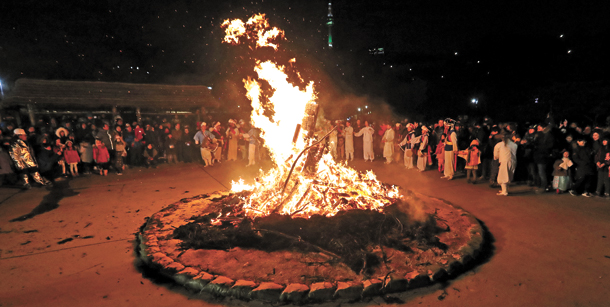
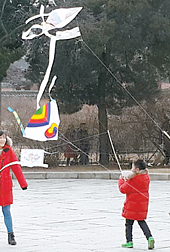
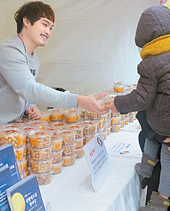
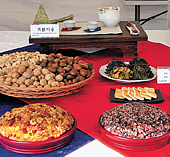
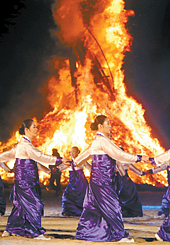










with the Korea JoongAng Daily
To write comments, please log in to one of the accounts.
Standards Board Policy (0/250자)